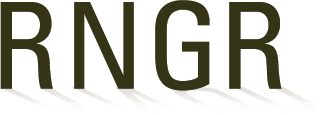Cyperaceae (Scirpus)
Scirpus (cyperinus)
Cyperaceae
Sedge Family
Scirpus
cyperinus
L. Kunth
Woolgrass
SCICYP
Mississippi
S. cyperinus is found in low wet ground from Newfoundland to Florida,west across the eastern and southern United States to Minnesota, Missouri, Texas and across southern Canada to southeastern British Columbia.
plants
seed
Container (plug)
1+0 container
6 Months
Height: n/a
Caliper: n/a
Root System: n/a
I harvest woolgrass Scirpus cyperinus (Leaf River Source) seeds in mid to late September (when fully mature and before any significant shattering occurs) by pulling or cutting the fruit clusters from the stem.
I loosen seeds from the fruit clusters using a brush machine (Westrup a/s Slagelse, Denmark) and then use a 50 X 50 (0.356 X 0.356 mm openings) wire mesh seed cleaning screen to remove inert matter. I have found that woolgrass can be stored dry in zip-lock-type plastic bags for at least 6 months or moist at cold temperatures for 3 to 4 months without affecting germination. I have achieved germination rates of 40% to 60%.
Seeds can be stored moist in zip-lock-type bags containing sphagnum peat moss at 5.5 øC (42 øF) or in cold water (5.5 øC [42 øF]).The cool temperatures and moist conditions serve as a stratification process.
I use a 3:1 (v:v) sphagnum peat moss:sand growing medium amended with commercially recommended quantities of pelletized slow-release fertilizer (for example, 1.8 to 3.6 kg/m3 [3 to 6 lb/yd3] Osmocote 13N:13P2O5:13K2O; 8 to 9 mo release rate at 21 øC [70 øF] or 1.8 to 3.6 kg/m3 [3 to 6 lb/yd3] Sierra 17N:6P2O5:12K2O; 3 to 4 mo release rate at 21 øC [70 øF]; The Scotts Company, Marysville, Ohio), 4.7 to 5.9 kg/m3 (8 to 10 lb/yd3) dolomitic lime, 0.89 kg/m3 (1.5 lb/yd3) Micromax micronutrient fertilizer (The Scotts Company, Marysville, Ohio) and a wetting agent (I use 0.59 kg/m3 [1 lb/yd3] 2000 G AquaGro [Aquatrols, Cherry Hill, New Jersey], which is no longer marketed). I pasteurize the sand in an electric soil sterilizer for 30 min at 82 øC (180 øF) to reduce weed problems.
Germination takes about 3 wk and is highest when the medium is saturated on a commercial ebb and flow greenhouse bench (Midwest Trading, Denmark) with water maintained 0.6 to 1.2 cm (0.25 to 0.5 in) deep. Greenhouse temperatures range from 13 to 38 øC (55 to 100 øF) during the germination period.
Subsequent seedling growth is best with a moist medium, maintained by regularly watering containers situated on normal greenhouse benches.
This agrees with my observations that wild plants require fairly wet conditions for germination, but plants become increasingly tolerant of drying substrates as they grow, with mature plants possessing a higher level of drought tolerance than would be anticipated for a wetland plant.
Observations on seed propagation of 5 Mississippi wetland species, Grabowski, J., Native Plants Journal, Spring 2001.
USDA NRCS. 1999. The PLANTS database, Version 3.0. URL: http://plants.usda.gov/plants (accessed 29 Sep 2000). Baton Rouge (LA): National Plant Data Center.
Grabowski, Janet M.. 2001. Propagation protocol for production of Container (plug) Scirpus cyperinus L. Kunth plants 1+0 container; USDA NRCS - Coffeeville/Jamie L. Whitten Plant Materials Center Coffeeville, Mississippi. In: Native Plant Network. URL: https://NativePlantNetwork.org (accessed 2025/09/02). US Department of Agriculture, Forest Service, National Center for Reforestation, Nurseries, and Genetic Resources.



